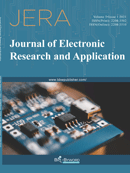Abstract
Chromogenic windows enable both energy-saving and daylighting regulation. However, the human response to the luminous environment affected by them is difficult to test, since their features of dynamic change and tinting automatically. This study explores the research methods, including experimental design and statistical analysis, by literature review and an experiment demonstration. The results show that a proper size of the test room is significant to obtain desired data, and the advanced VR technologies have the potential to be applied for testing these dynamic variables. Bayesian approaches are recommended to be tried and get more accurate interference about the experimental results.
References
Jelle BP, Hynd A, Gustavsen A, Arasteh, et al., 2012, Fenestration of Today and Tomorrow: A State-Of-The-Art Review and Future Research Opportunities. Solar Energy Materials and Solar Cells. 96: 1-28.
Vossen FM, Aarts MPJ, Debije MG, 2016, Visual Performance of Red Luminescent Solar Concentrating Windows in an Office Environment. Energy and Buildings. 113: 123-132.
Dubois MC, Cantin F, Johnsen K, 2007, The Effect of Coated Glazing on Visual Perception: A Pilot Study Using Scale Models. Lighting Research and Technology. 39(3): 283-304.
Chen X, Zhang X, Du J, 2019, Glazing Type (Colour and transmittance), Daylighting, and Human Performances at a Workspace: A Full-Scale Experiment in Beijing. Building and Environment. 153: 168-185.
Matusiak B, Anter KF, Angelo K, 2012, Colour Shifts Behind Modern Glazing. University College of Arts, Crafts and Design, Stockholm, available online: https://www.researchgate.net/publication/263470151_Colour_shifts_behind_modern_glazing
Yu H, Akita T, 2019, The Effect of Illuminance and Correlated Colour Temperature on Perceived Comfort According to Reading Behaviour in a Capsule Hotel. Building and Environment. 148: 384-393.
Ru T, de Kort YAW, Smolders KCHJ, et al., 2019, Non-Image Forming Effects of Illuminance and Correlated Colour Temperature of Office Light on Alertness, Mood, and Performance Across Cognitive Domains. Building and Environment. 149: 253-263.
Revantino, Mangkuto, et al., 2018, The Effect of Illuminance and Correlated Colour Temperature, and Colour Rendering of Various Existing Light-Emitting Diode Lamps on Subjective Preference and Performance in Indonesia. Journal of Building Engineering. 19: 334-341.
Kruschke JK, Liddell TM, 2017, The Bayesian New Statistics: Hypothesis Testing, Estimation, Meta-Analysis, and Power Analysis from a Bayesian Perspective. Psychonomic Bulletin & Review. 25(1): 178-206.
Lee S, et al., 2018, A Bayesian Approach for Probabilistic Classification and Inference of Occupant Thermal Preferences in Office Buildings. Building and Environment. 118: 323-343.
Wang Z, Hong T, 2020, Learning occupants’ indoor comfort temperature through a Bayesian inference approach for office buildings in United States. Renewable and Sustainable Energy Reviews. 119: 109593.
Xiong J, et al., 2018, Inferring Personalized Visual Satisfaction Profiles in Daylit Offices from Comparative Preferences using a Bayesian Approach. Building and Environment. 138: 74-88.
Abd-Alhamid F, et al., 2020, Evaluating the Impact of Viewing Location on View Perception using a Virtual Environment. Building and Environment. 180.
Flor JF, et al., 2021, Virtual Reality as a Tool for Evaluating User Acceptance of View Clarity Through ETFE Double-Skin Façades. Energy and Buildings. 231.
Shahinmoghadam M, et al., 2021, BIM- and IoT-Based Virtual Reality Tool For Real-Time Thermal Comfort Assessment in Building Enclosures. Building and Environment. 199.
Vittori F, et al., 2021, Subjective Thermal Response Driving Indoor Comfort Perception: A Novel Experimental Analysis Coupling Building Information Modelling and Virtual Reality. Journal of Building Engineering. 41.
Yeom S, et al., 2020, Determining the Optimal Window Size of Office Buildings Considering the Workers’ Task Performance and the Building’s Energy Consumption. Building and Environment. 177.
